Thermaltake Toughpower SFX 600W PSU Review
The highest-end member of Thermaltake's Toughpower SFX Gold line is on our test bench today. It offers Gold efficiency, modular cabling, and a semi-passive fan mode. Thanks to its 600 W capacity, you can easily build a powerful system with it.
Why you can trust Tom's Hardware
Transient Response Tests
Advanced Transient Response Tests
For details on our transient response testing, please click here.
Ιn these tests, we monitor the STP-0600F-G's response in two different scenarios. First, a transient load (10 A at +12V, 5 A at 5V, 5 A at 3.3V and 0.5 A at 5VSB) is applied for 200 ms while the PSU works at 20 percent load. In the second scenario, the STP-0600F-G is hit by the same transient load while operating at 50 percent load. In both tests, we use our oscilloscope to measure the voltage drops caused by the transient load. The voltages should remain within the ATX specification's regulation limits.
These tests are crucial because they simulate the transient loads a PSU is likely to handle (such as booting a RAID array or an instant 100 percent load of CPU/GPUs). We call these tests "Advanced Transient Response Tests," and they are designed to be very tough to master, especially for a PSU with a capacity of less than 500 W.
Advanced Transient Response at 20 Percent
| Voltage | Before | After | Change | Pass/Fail |
|---|---|---|---|---|
| 12V | 12.067V | 11.831V | 1.96% | Pass |
| 5V | 4.997V | 4.847V | 3.00% | Pass |
| 3.3V | 3.311V | 3.176V | 4.08% | Pass |
| 5VSB | 5.011V | 4.953V | 1.16% | Pass |
Advanced Transient Response at 50 Percent
| Voltage | Before | After | Change | Pass/Fail |
|---|---|---|---|---|
| 12V | 12.000V | 11.832V | 1.40% | Pass |
| 5V | 4.963V | 4.813V | 3.02% | Pass |
| 3.3V | 3.279V | 3.146V | 4.06% | Pass |
| 5VSB | 4.967V | 4.904V | 1.27% | Pass |
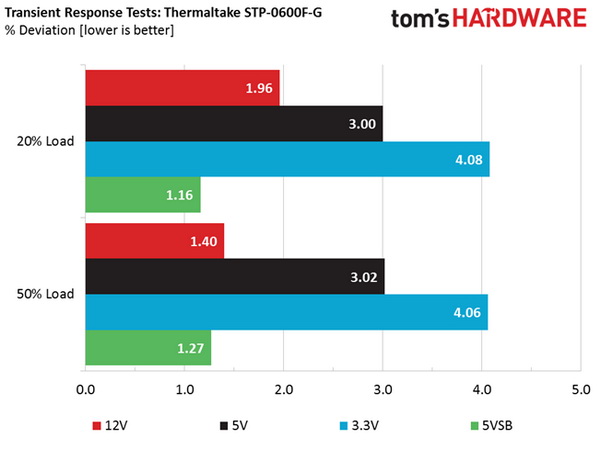
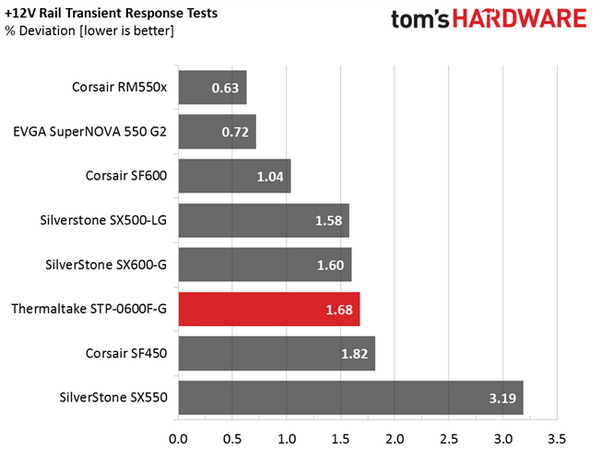
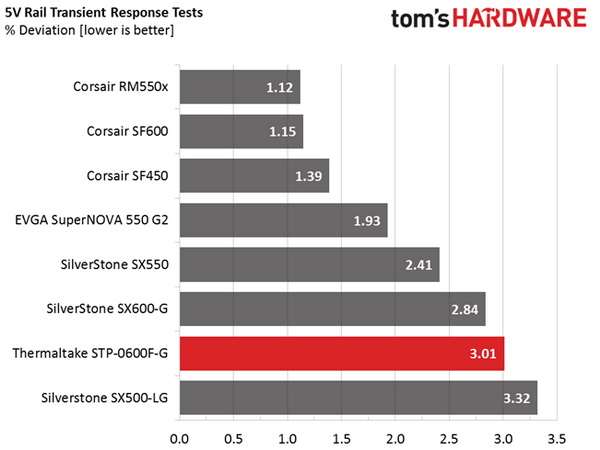
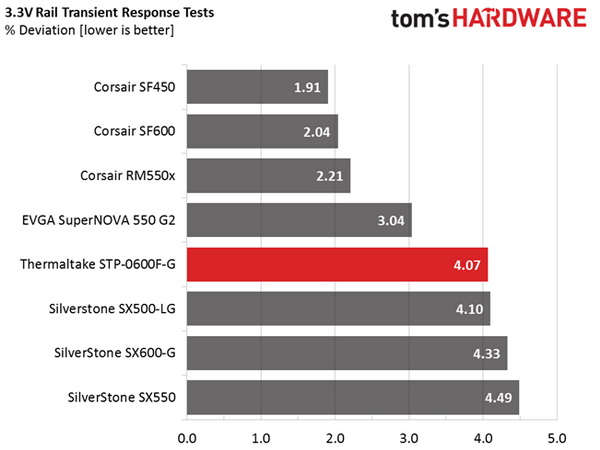
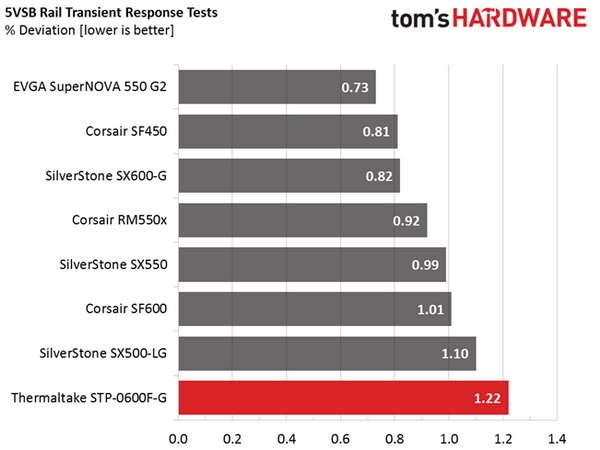
The +12V rail registers high deviations, reaching close to two percent during the first round of tests as the main switching FETs operate in PWM mode. In addition, the 5V and 3.3V rails are mediocre. Only the 5VSB rail delivers decent performance, though it still doesn't match the competition.
Here are the oscilloscope screenshots we took during Advanced Transient Response Testing:
Transient Response At 20 Percent Load
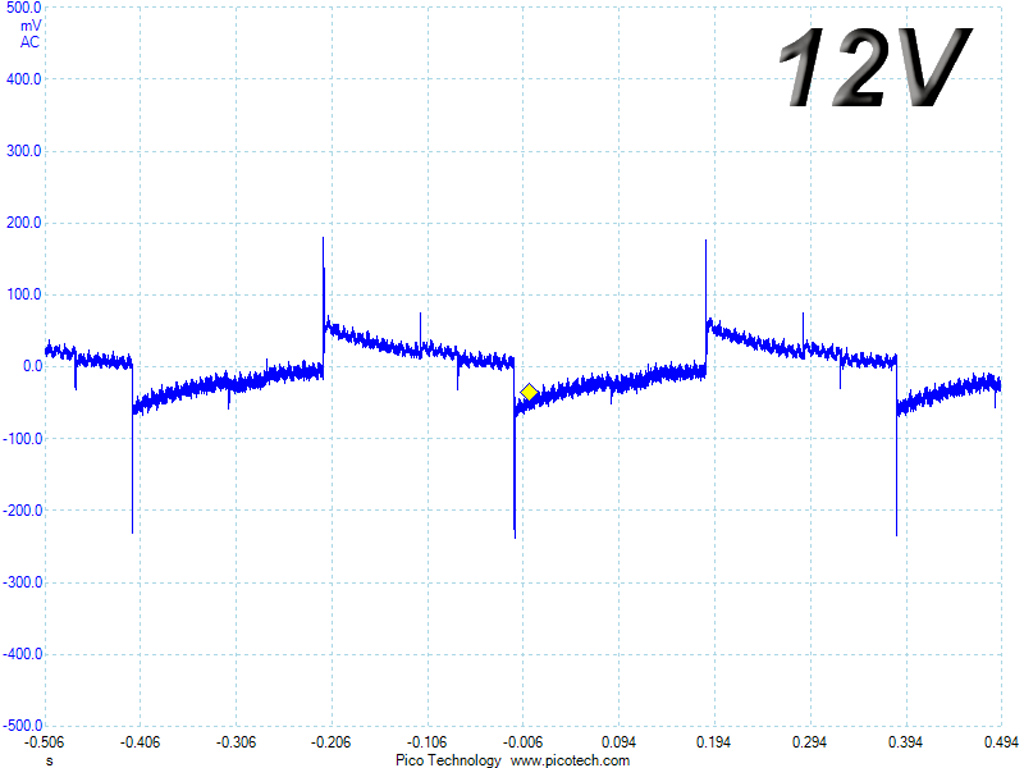
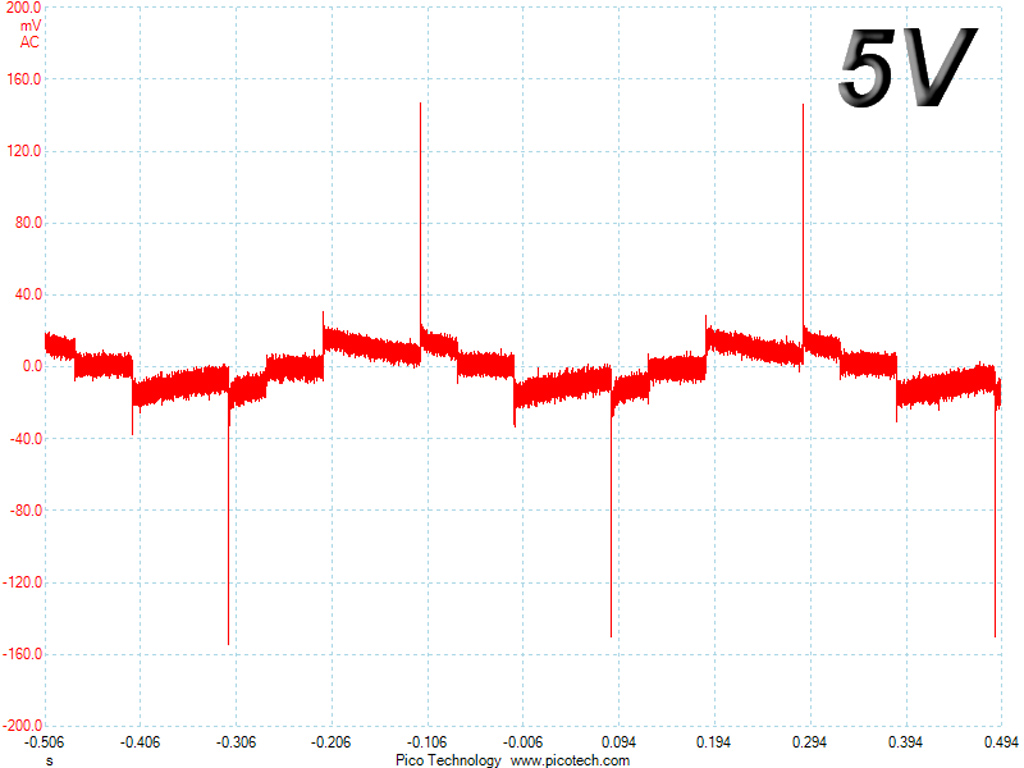
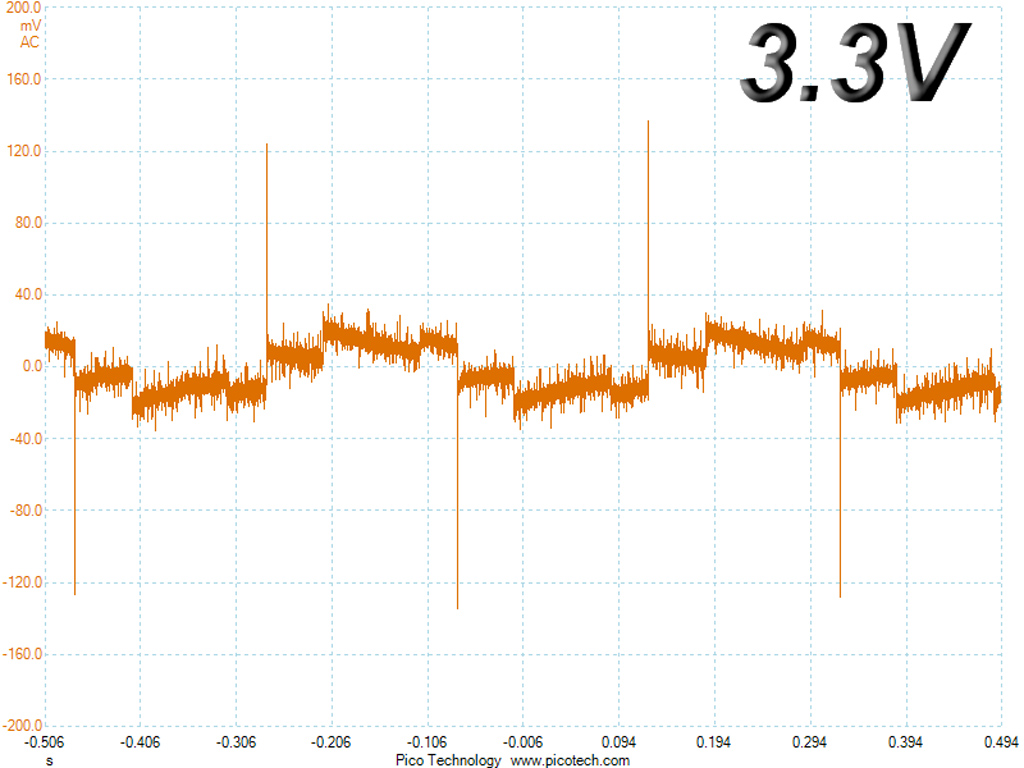
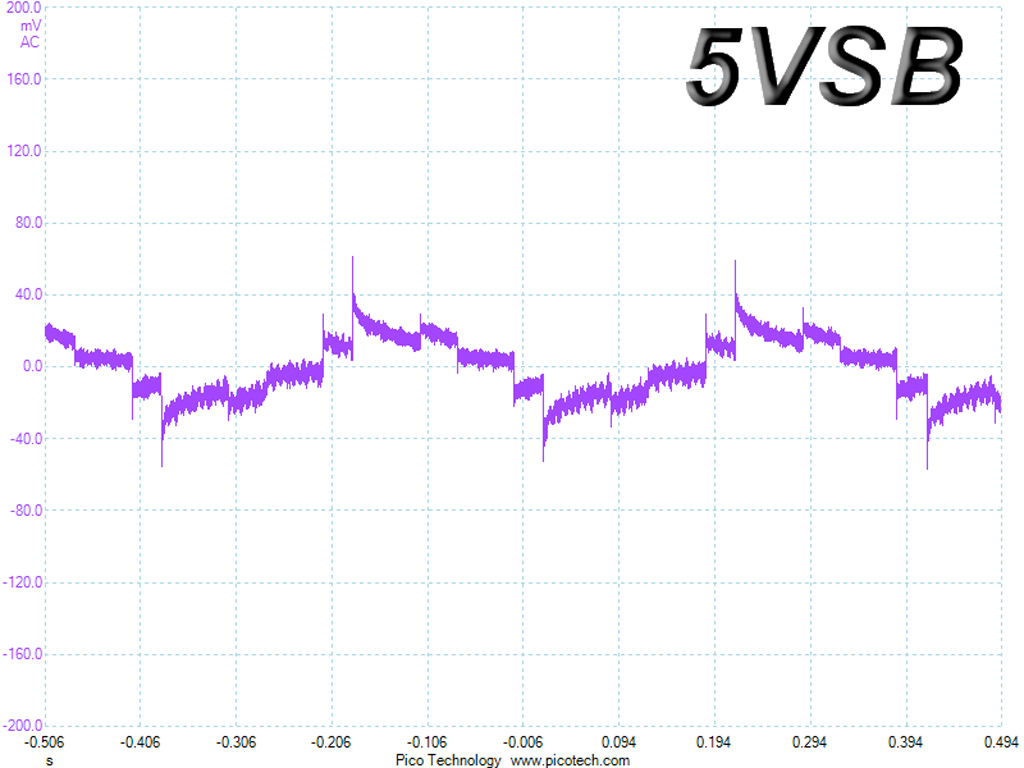
Transient Response At 50 Percent Load
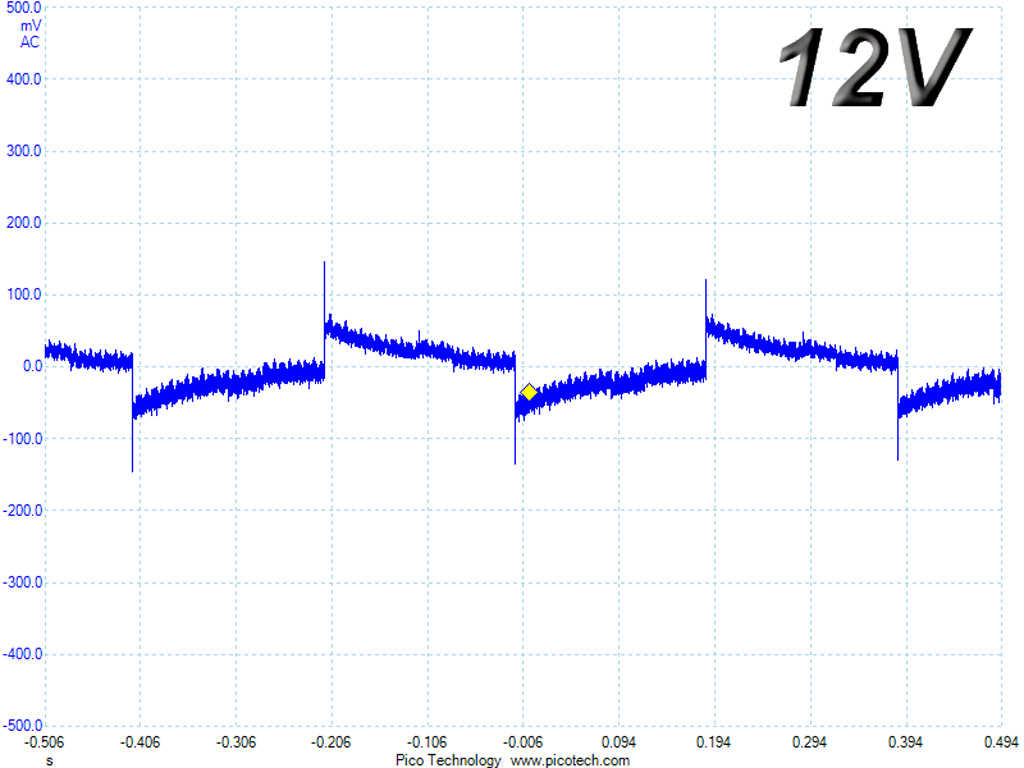
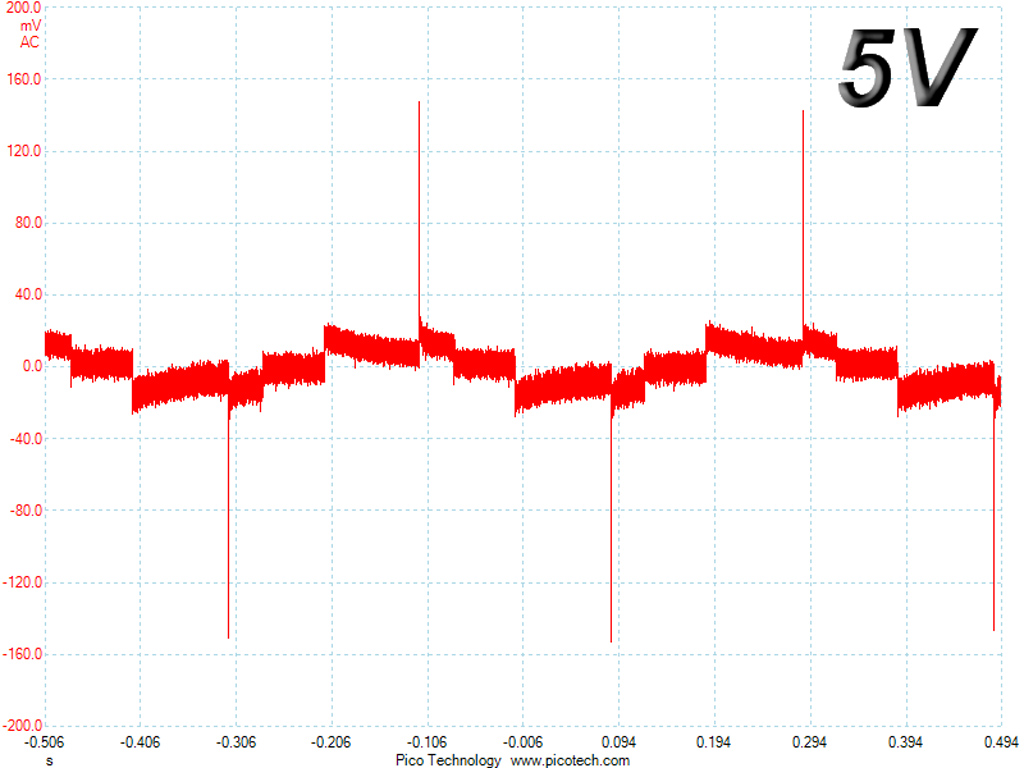
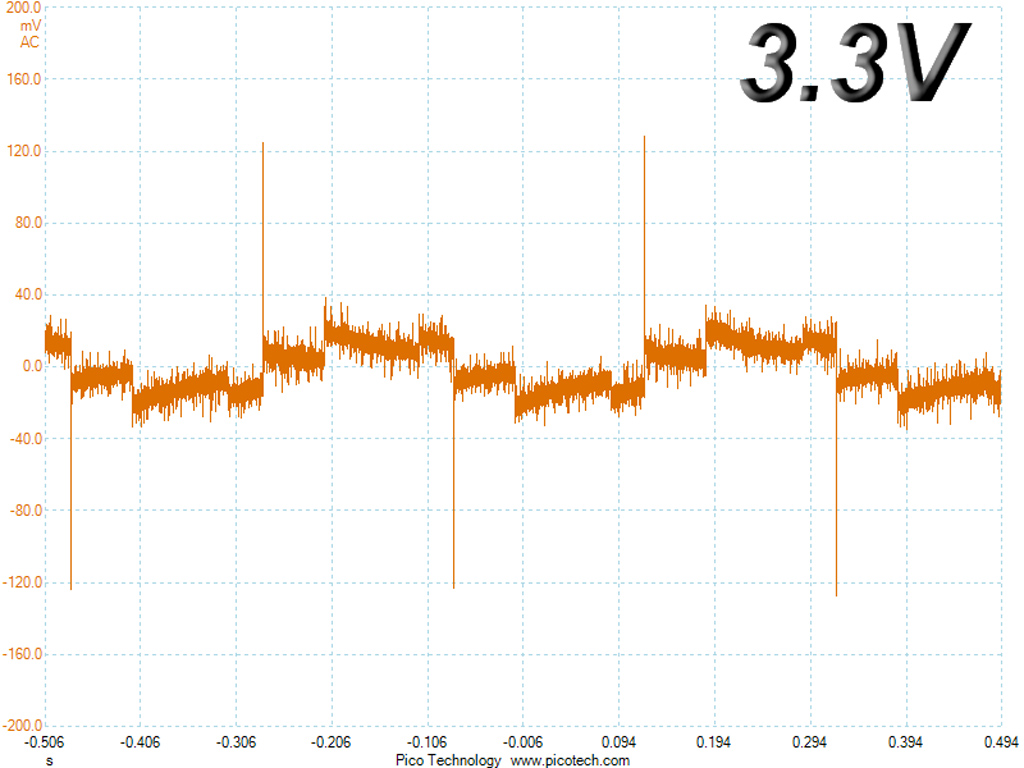

Turn-On Transient Tests
In the next set of tests, we measure the STP-0600F-G's response in simpler transient load scenarios—during the PSU's power-on phase.
For the first measurement, we turn off the STP-0600F-G, dial in the maximum current the 5VSB rail can output and switch the PSU on. In the second test, we dial the maximum load the +12V can handle and start the PSU while it's in standby mode. In the last test, while the STP-0600F-G is completely switched off (we cut the power or switch the PSU off by flipping its on/off switch), we dial in the maximum load the +12V rail can before switching the PSU on from the loader and restoring power. The ATX specification states that recorded spikes on all rails should not exceed 10 percent of their nominal values (+10 percent for 12 V is 13.2 V, and 5.5 V for 5 V).
Get Tom's Hardware's best news and in-depth reviews, straight to your inbox.
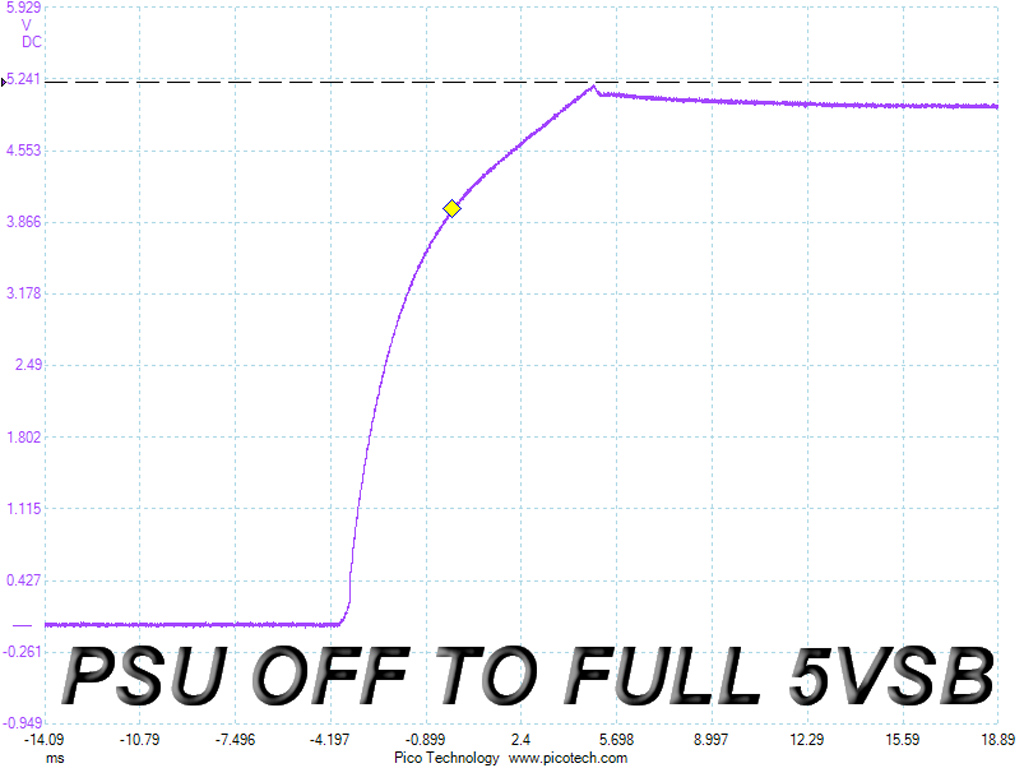
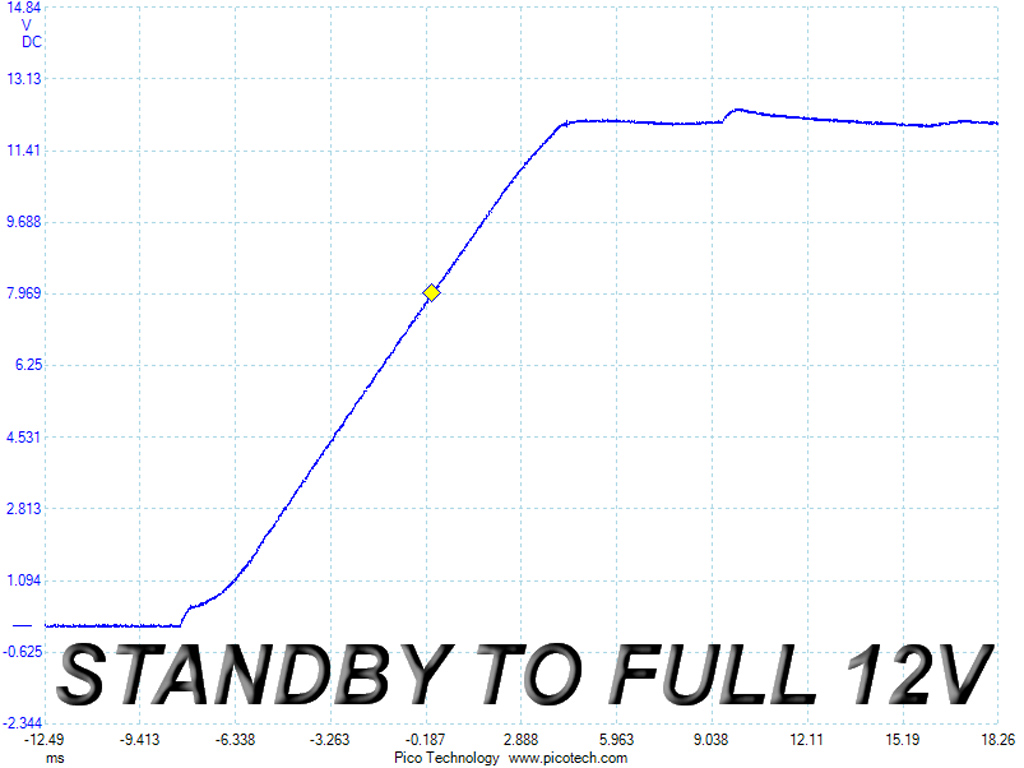
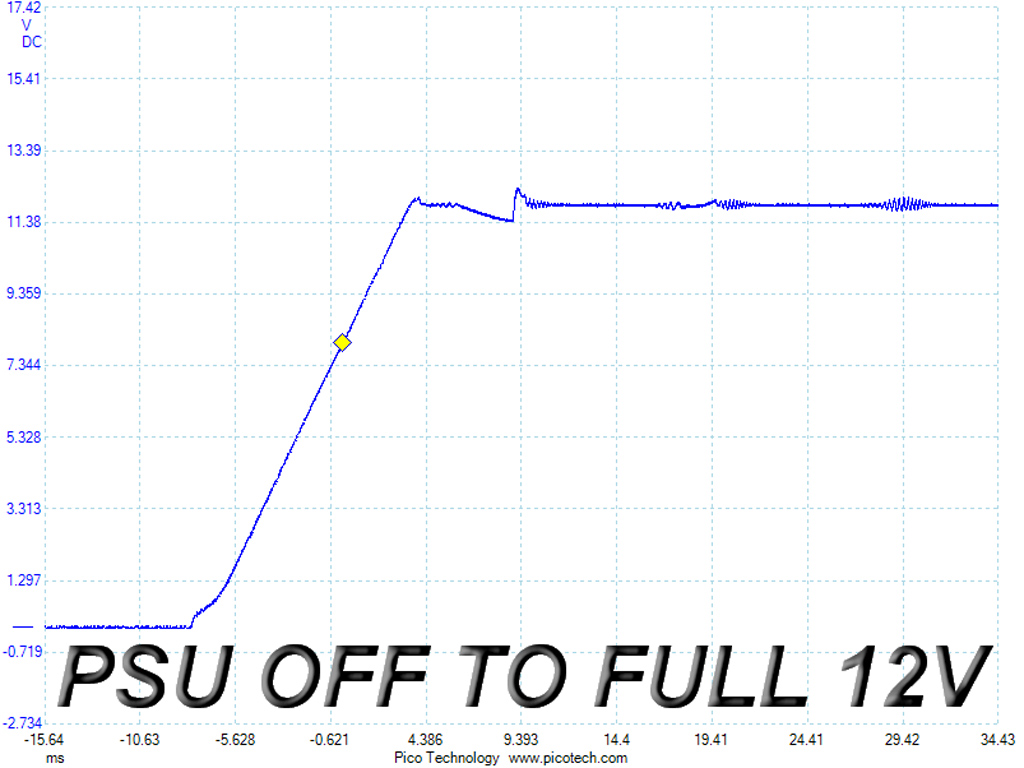
A small spike at 5VSB and a not-so-straight slope during the last test are enough to cost the STP-0600F-G performance points in these metrics. The performance isn't bad, or even average, but it's also not perfect.
Current page: Transient Response Tests
Prev Page Cross-Load Tests And Infrared Images Next Page Ripple Measurements
Aris Mpitziopoulos is a contributing editor at Tom's Hardware, covering PSUs.
-
Pixdawg Based on this review, I wouldn't buy the thing for half its listed price. How the devil did it get a Gold rating, anyway?Reply -
Clamyboy74 You would only need 2 pcie cables since these psu are designed for sff builds, with only 1 gpu since you also use a m-itx board.Reply -
turkey3_scratch This power supply is a disaster. It does not have working protection circuitry and should be a 450W unit, not a 600W unit.Reply
This thing sucks.
This unit is a 450W power supply IMO. Basically, Thermaltake probably took their 450W power supply, slapped 600W on it, kept the same amount of PCIe cables, and called it a 600W power supply. This power supply is stupid, I don't know who would buy it. That's just my opinion of course, but safety should be the most important thing of a power supply, and even thought it didn't blow up, if it had 510mv of ripple at 110% load, imagine what it had at 140% load before it shut off? Probably 2000mv of ripple. There goes the GPU. There goes the CPU. There goes everything!
But Thermaltake knows that not a single person who purchases this thing will have done their PSU research, and therefore not a single person buying this thing will probably have a system that demands more than 250-300W. Thermaltake preys on the vulnerabilities of the uneducated, it's a disgrace, it's disgusting.
18596603 said:You would only need 2 pcie cables since these psu are designed for sff builds, with only 1 gpu since you also use a m-itx board.
You wouldn't need a 600W power supply with an SFF build period. It razzes my berries that the mere fruit of the existence of this thing is an example of an unethically engineered product that nobody needs but is designed for those who don't know what they don't need. -
jonnyguru Reply18596603 said:You would only need 2 pcie cables since these psu are designed for sff builds, with only 1 gpu since you also use a m-itx board.
Not until the Corsair SF Series was released while I was sitting behind a desk at Corsair did I realize just how many people use SFX power supplies in full size cases. Absolutely AMAZES me. So.. yeah... -
cats_Paw As much as I give Tomshardware a lot of pain for many of their articles This one is a very solid test.Reply
The PSU is one of the most important parts of the PC (Id say its THE most important), so a good review of a PSU is always welcome.
Well done toms. -
Dark Lord of Tech I commend Thermaltake for releasing into the SFX market , more competition is good for the industry. With very little to choose from , it's still a huge plus to have more SFX units out there on the retail market.Reply -
turkey3_scratch Reply18599544 said:I commend Thermaltake for releasing into the SFX market , more competition is good for the industry. With very little to choose from , it's still a huge plus to have more SFX units out there on the retail market.
Yeah but this is not what I'd call competition... Nobody needs to compete against Thermaltake's product since it stinks. -
nem3s1s GOOD QUALITY as usual on Enhance but seems they need smart enginiers to up level to the designs. wireless etcReply